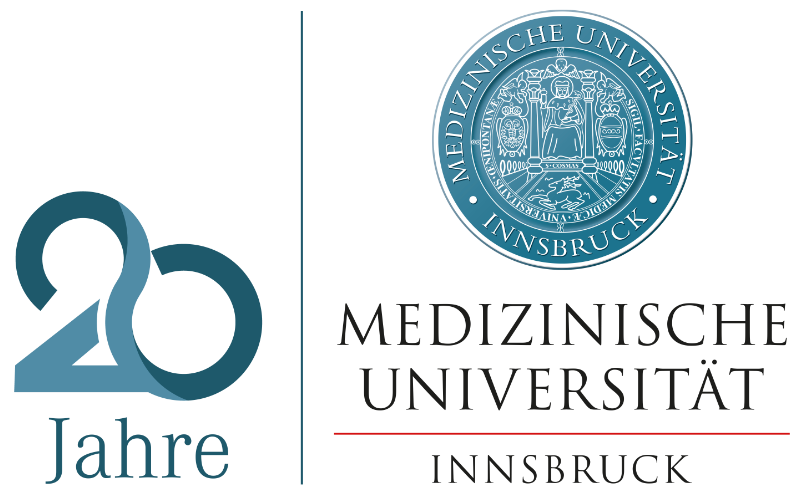Bariatric and Metabolic Surgery (Obesity Surgery)
Team of doctors:
Ao. Univ.-Prof. Dr. H. Wykypiel, FEBS/FEBTS UGI
Priv.-Doz.in Dr.in Kienzl-Wagner
Dr. Philipp Gehwolf, FEBS/FEBTS UGI
Dr.in Fergül Cakar-Beck
Special doctor's appointment:
Mondays 09:00 bis 15:00
phone : +43 (0)50 504 50010
In the special consultation hour we deal with pathological obesity and the associated additional diseases (e.g. blood sugar disease, high blood pressure, fat metabolism diseases, cardiovascular diseases). We offer detailed discussions about the surgical options for treating these diseases. At the same time, this facility gives us the opportunity to monitor all patients operated on by us during the course of the operation, thus enabling us to offer a close meshed care.
When do we speak of obesity/BMI?
The personal body weight is calculated according to the so-called Body Mass Index (BMI). The calculation is based on the following formula: n body weight (kg) divided by height (m) squared. BMI calculator
According to the WHO definition, obesity is present from a body mass index (BMI) of 30 kg/m², whereby three degrees of severity are distinguished, which are also defined by the BMI. Up to a BMI of 25, the patient is considered to be of normal weight. However, obesity in need of treatment is already given with a BMI of more than 30. From a BMI of 35 if there are already secondary diseases or from a BMI of 40 if there are no secondary diseases, surgical treatment of obesity should be considered.
What treatment options are available?
What treatment options are available?
Drug therapy
Drug therapy, as well as surgical therapy, is only used in special cases. Only when the BMI limit of 30 kg/m² is reached and other therapy options, as well as behavioural measures such as nutritional or exercise therapy, have been unsuccessful. Drug therapy is only an additional measure and in no case a diet or exercise substitute and should only be continued over a longer period of time if sufficient weight loss is achieved within the first four weeks.
Surgical treatment
Obesity surgery is used to treat a symptom (overweight), but not the cause of the chronic disease obesity. The aim of adiposity surgery is to reduce overweight and to alleviate or cure existing secondary diseases, such as blood sugar disease (diabetes mellitus) or high blood pressure (arterial hypertension) and thus improve the quality of life.
Information English
Which operations for the treatment of obesity are performed in our clinic?
Gastric band
Tubular stomach formation (gastric sleeve resection)
In this surgical method, a large part of the stomach is removed to form an elongated stomach tube with a filling volume of 100 to 150 ml. This leads to a feeling of fullness after the intake of small amounts of food. At the same time, there are indications that the sleeve resection reduces the release of the hunger hormone ghrelin and patients feel less hungry. In most cases, the operation can be performed laparoscopically. Recently, we have also started offering this procedure to selected patients using the so-called SILS technique (surgery through a single small incision in the navel without a visible larger scar). In the long term, regular check-ups are necessary in order to be able to detect and treat deficiencies (e.g. vitamins, minerals, trace elements), which are caused by the disturbed utilization of food, in time. Probable hospital stay: 4-6 days. Average weight loss: approx. 60% of overweight.
Gastric Bypass
During gastric bypass surgery (the so-called "Roux-Y gastric bypass" or the "Omega-Loop gastric bypass"), the stomach is completely cut through in the upper part and a small gastric pocket is formed which is directly connected to the small intestine. The rest of the stomach, the duodenum and a part of the upper small intestine are thus cut off from the digestion and by deep introduction of the digestive juices such as bile and pancreatic juice, the food pulp only comes into contact with these later, so that a large part of the food is excreted unused. This combination (low intake, poor utilization) often results in a greater weight loss than with the gastric band. However, the surgical technique of the laparoscopic bypass requires more experience and is currently only offered at centres in Austria. The complication rate after bypass is also slightly higher than after ligament implantation or gastric sleeve resection. Dangerous are mainly problems caused by leaks in the area of the staple suture rows, and deaths have also been described. Nevertheless, gastric bypass is a well-established, highly effective operation. In the long term, regular check-ups are necessary in order to be able to detect and treat deficiencies (e.g. vitamins, minerals, trace elements) caused by the disturbed utilization of food in time.
Probable hospital stay: 3-5 days. Average weight loss: about 70% of overweight.
Univ.-Klinik für Visceral-, Transplantations- und Thoraxchirurgie
Universitätsklinik für Visceral-, Transplantations- und Thoraxchirurgie
Anichstraße 35 | 6020 Innsbruck
t +43 512 504-22600 | f +43 512 504-22602
E-Mail: chirurgie@i-med.ac.at
► VTT auf Facebook
► VTT auf LikedIn
► VTT auf Twitter
► VTT auf ResearchGate
► VTT Blog
Universitätsklinik für Visceral-, Transplantations- und Thoraxchirurgie
Anichstraße 35 | 6020 Innsbruck
t +43 512 504-22600 | f +43 512 504-22602
E-Mail: chirurgie@i-med.ac.at
► VTT auf Facebook
► VTT auf LikedIn
► VTT auf Twitter
► VTT auf ResearchGate
► VTT Blog





